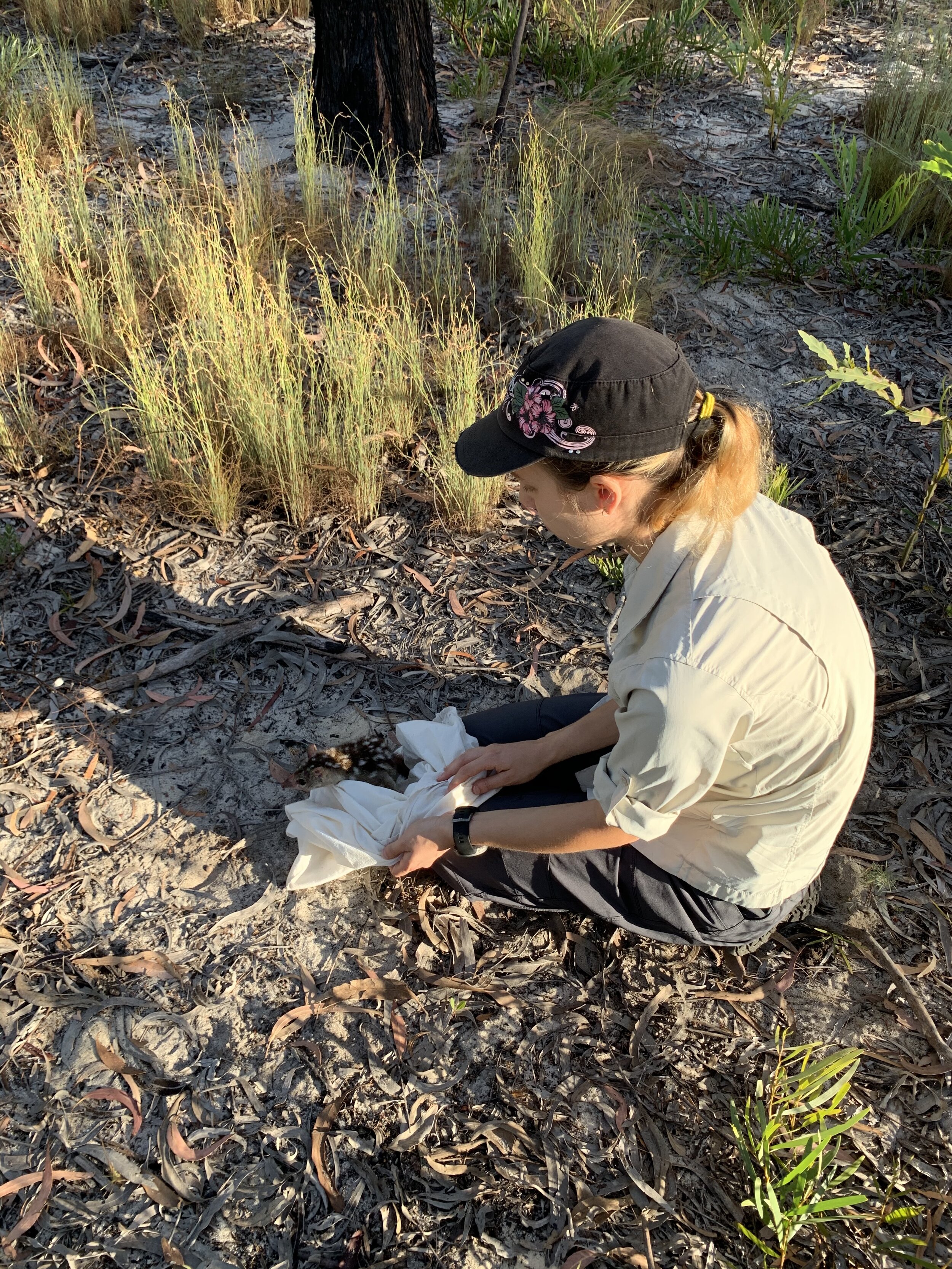If someone asked me to sum up my Honours experience in one word, I’d tell them, that’s an impossible task. My Honours year was full of highs and lows, but whose Honours year isn’t? I learnt so many new skills, particularly in the lab, since my project was in the field of conservation genetics focusing on the Northern Quoll population (Dasyurus hallucatus) of Groote Eylandt.
Back during my 2018 trip to Groote Eylandt. I am collecting data after finding a quoll in the trap one morning.
Groote Eylandt is one of the last safe havens for the endangered species, remaining free from the main causes of their decline (eg. cane toads). Whilst this island population is high in density compared to that of other populations, we didn’t know if translates to the population having a high genetic diversity. Genetic diversity is needed to ensure the population can adapt in the future and avoid inbreeding; in other words, it’s vital for survival. Island populations, however, are at increased risk of losing genetic diversity, especially if the population fluctuates in density.
A quoll from my first trip to Groote Eylandt in 2018. If you look closely you can see the ear clip we took for DNA analysis.
This island population was recorded by the Wilson Lab to almost halve in density between 2012 and 2016, followed by a sharp increase in 2017 and 2018. These large fluctuations had the potential to cause a drop in genetic diversity which could be disastrous for this precious island population. Therefore, the main aim of my Honours was to assess if genetic diversity, for this particular Northern Quoll’s island population, declined over these years.
To test my hypothesis, I spent many hours in the lab with Nat (thank you, you absolute legend!) and Mather (the genetics whiz who we could not have done this without), extracting DNA from tissues, then running polymerase chain reactions (PCR) to amplify the DNA. I then had to ‘score’ the microsatellites (fancy term for the DNA data) we got back from the sequencing company. After what felt like years in front of a computer screen, along came COVID-19 to shake things up. We had to forget about the DNA data for the babies, but I was lucky to finish all 794 adults before the uni was shut down.
Nat (foreground) and myself (background) trying to smile our way through lab work while blocking the horrible sounds of a machine we had to use (Photo credit: Nat Freeman)
Now bound to my share house with two fellow uni students, I worked on analysing the microsatellite data. I can tell you that my roommates are now very well educated on Northern Quolls!
Now for the exciting part – what did I find? Spoiler alert, it’s all good news!
I found that the genetic diversity of the Groote Eylandt Northern Quoll population did not change over time, despite the massive decline in density (another mystery to solve!). All other genetic parameters I tested came back positive too, - for instance, there was no signs of inbreeding and their effective population size was high – yay!
In this case, the isolation of an island has been advantageous, acting as a refuge from the threats faced on the mainland. As a result, this population may be a vital insurance policy against future declines, potentially providing a source of individuals for future translocations programs should the need ever arise.
Me releasing a quoll during my trip to Groote Eylandt in Oct 2019. Since I didn't get to do my own fieldwork I got to help Kaylah!




